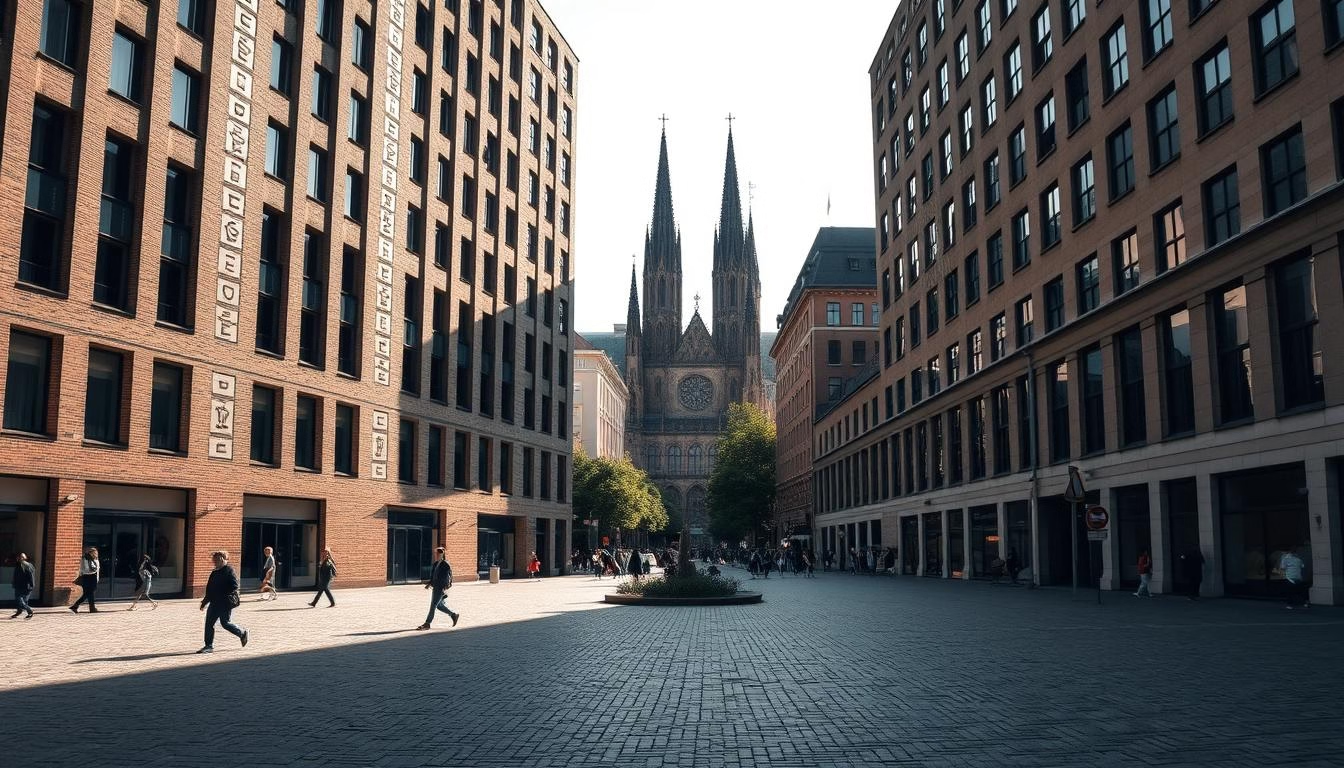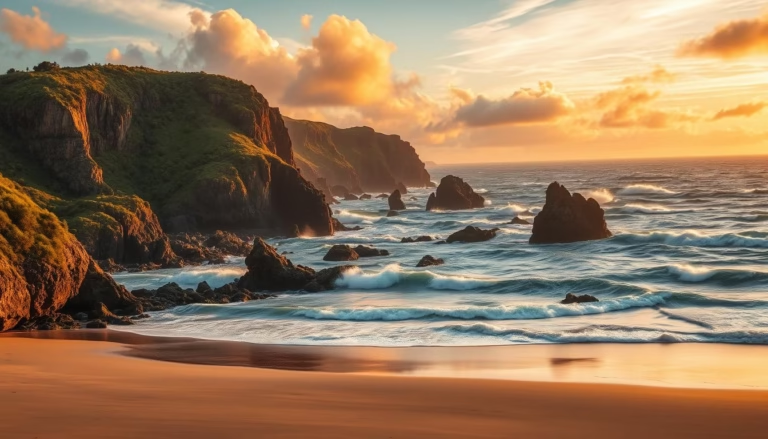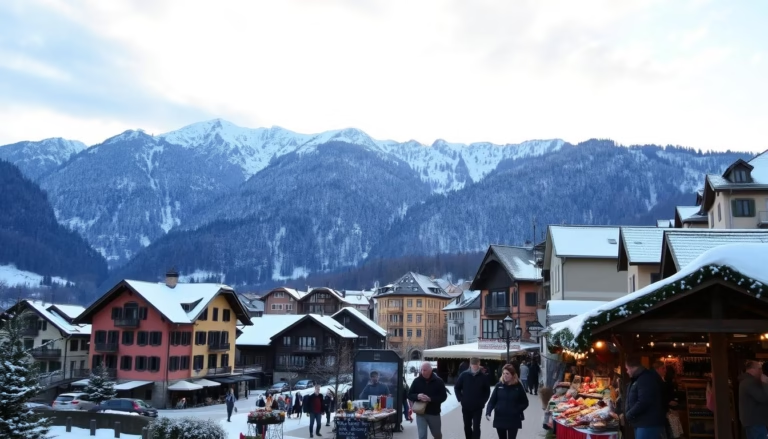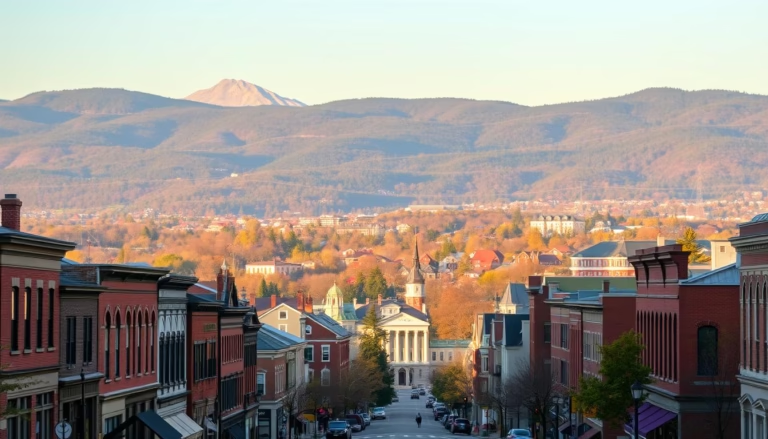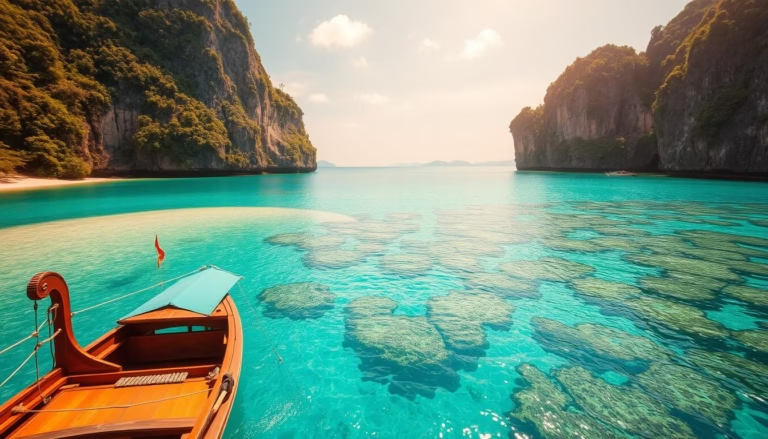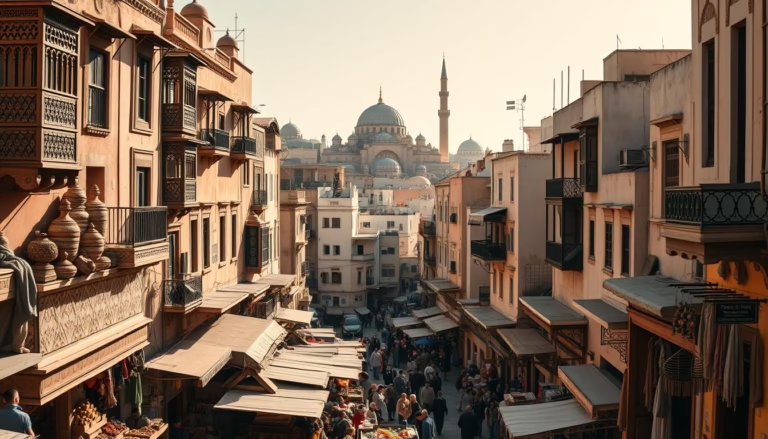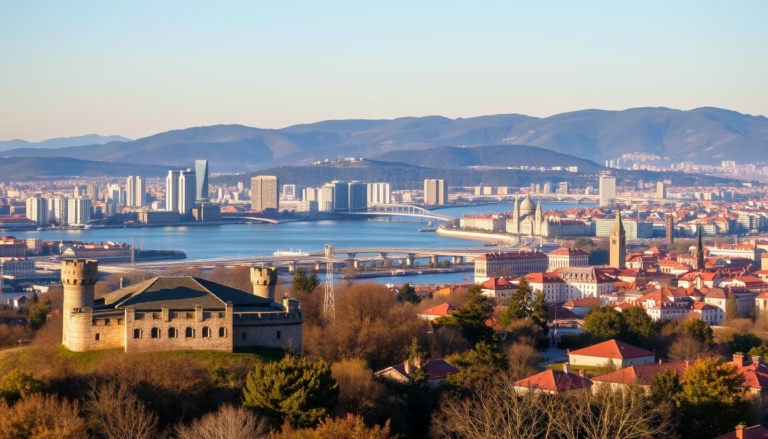Discover the Best Cities to Visit in Sweden
Did you know Stockholm’s city center spans 14 interconnected islands, offering waterfront views from nearly every street? This Scandinavian nation blends metropolitan energy with wild landscapes so seamlessly that 87% of its urban areas border protected nature reserves. Travelers experience vibrant cultural hubs where moose sightings occur within city limits and archipelago ferries depart from downtown docks.
Swedish destinations cater to every taste. Modern design museums stand beside medieval castles, while cozy cafés serving kanelbullar (cinnamon buns) nestle between cutting-edge tech districts. Efficient public transportation connects these locations, letting visitors explore crystalline lakes and dense forests within an hour of leaving their hotel.
The country’s fika coffee tradition embodies its approach to life – moments of connection paired with quality craftsmanship. Seasonal shifts transform experiences completely: summer midnight sun festivals contrast with winter’s snow-draped Christmas markets glowing under northern lights.
Key Takeaways
- Swedish urban areas blend modern amenities with direct access to nature reserves and waterways
- Unique architectural mixes range from Viking-era ruins to sustainable eco-districts
- Efficient transit systems enable easy day trips to forests, lakes, and archipelagos
- Cultural rituals like fika breaks reveal local lifestyle priorities
- Seasonal variations create dramatically different travel experiences year-round
- Compact city layouts allow walking between major attractions and hidden local gems
Introduction: Sweden’s Charming Urban and Natural Escapes
Sweden’s magic lies in its effortless balance of sleek city life and wild landscapes. Picture sipping coffee in a cobblestone square while kayaks glide past harborfront apartments – this is everyday Nordic living. Locals cherish green spaces as much as design boutiques, creating destinations where museums share zip codes with berry-filled forests.
What Makes Sweden a Must-Visit Destination
Nordic culture thrives on lagom – the art of “just enough.” You’ll feel it in walkable downtowns where historic churches neighbor vegan food halls. Unlike crowded European hotspots, Swedish streets buzz calmly, letting you explore at your own pace. Make time for fika, the daily coffee ritual where cinnamon buns taste better amid laughter and shared stories.
Every season brings new things to love. Summer’s endless daylight fuels waterfront festivals, while winter wraps cities in snowflakes and the glow of candlelit cafés. Many hotels even offer northern lights alerts – a cozy perk when auroras dance overhead.
Travel Tips for American Visitors
Direct flights from New York or Chicago land you in Stockholm or Gothenburg in under 9 hours. Though Sweden uses the krona, cards work nearly everywhere. Remember: tipping isn’t expected, but saying “tack” (thank you) always earns smiles.
Pack for adventures! Cities connect seamlessly to nature – within an hour, you could be picking cloudberries or sailing through archipelagos. Public transit makes these day trips simple, so keep your schedule flexible. Whether you’re looking for design inspiration or forest hikes, Sweden delivers both in one unforgettable package.
Stockholm: Urban Culture, Historic Gems, and Natural Beauty
Welcome to Scandinavia’s largest city, where 14 interconnected islands create a metropolis floating between Lake Mälaren and the Baltic Sea. Stockholm’s metro system surprises visitors – its stations double as underground art galleries showcasing installations from 150+ creators. This blend of functionality and creativity defines Sweden’s capital.
Exploring Gamla Stan and Iconic Museums
Step into Gamla Stan, the medieval old town where cobblestone streets wind past mustard-yellow buildings and iron lanterns. Don’t miss Stortorget Square, where 16th-century merchant houses frame Sweden’s narrowest alley (just 90 cm wide).
Two museums stand out:
- Vasa Museum: Home to a 17th-century warship salvaged after 333 years underwater – 98% original
- ABBA Museum: Interactive exhibits let you sing alongside holograms of the legendary pop group
Fika Spots and Winter Wonders
Join locals at Chokladkoppen café for fika. Their white chocolate cheesecake pairs perfectly with views of Gamla Stan’s copper spires. When snow blankets the city, ice skate on Kungsträdgården’s frozen pond or chase northern lights on archipelago cruises.
Warmer months invite exploration of the Stockholm archipelago. Hop a ferry to car-free islands like Grinda, where pine forests meet sandy beaches – all within 90 minutes of downtown.
Pro tip: Fly direct from Chicago or Newark to Arlanda Airport. Stockholm’s compact layout means you’ll stroll from royal palaces to hip Södermalm districts effortlessly.
Gothenburg and the West Coast Experience
Sweden’s west coast cradles Gothenburg, a maritime jewel where 17th-century canals meet modern design studios. As the nation’s second-largest city, it delivers Stockholm’s cultural punch with half the bustle. Wander past colorful Feskekôrka fish market to Liseberg, Europe’s oldest amusement park, where wooden rollercoasters rattle beside summer concert stages.
Harbor Walks, Cafés, and Island Adventures
Start your day along the west coast’s historic docks. The Älvsborg Fortress views from Lilla Bommen harbor pair perfectly with cinnamon-laced kanelbullar at Kafferosten café. Families love Universeum’s rainforest exhibit, where sloths climb above shark tanks.
| Gothenburg Archipelago Area | Access | Highlights |
|---|---|---|
| Northern Islands | By car or bus | Rocky cliffs, seaside saunas |
| Southern Islands | Ferry only | Car-free villages, sandy beaches |
Volvo’s birthplace celebrates its automotive legacy through interactive exhibits at the Volvo Museum. Test drive vintage models or marvel at safety innovations that shaped global car culture.
Hop a ferry to car-free Styrsö island for wildflower hikes and smoked herring lunches. Back in city limits, the Botanical Garden’s arboretum offers 16,000 plant species – a quiet bit of paradise minutes from downtown trams.
Cultural and Historic Highlights in Smaller Swedish Cities
Beyond Sweden’s bustling capitals lie charming towns where history whispers through cobblestone streets. These hidden gems deliver authentic Nordic culture without the crowds, blending medieval architecture with eco-conscious innovation. Direct flights and efficient rail links make them surprisingly accessible for travelers seeking deeper connections.
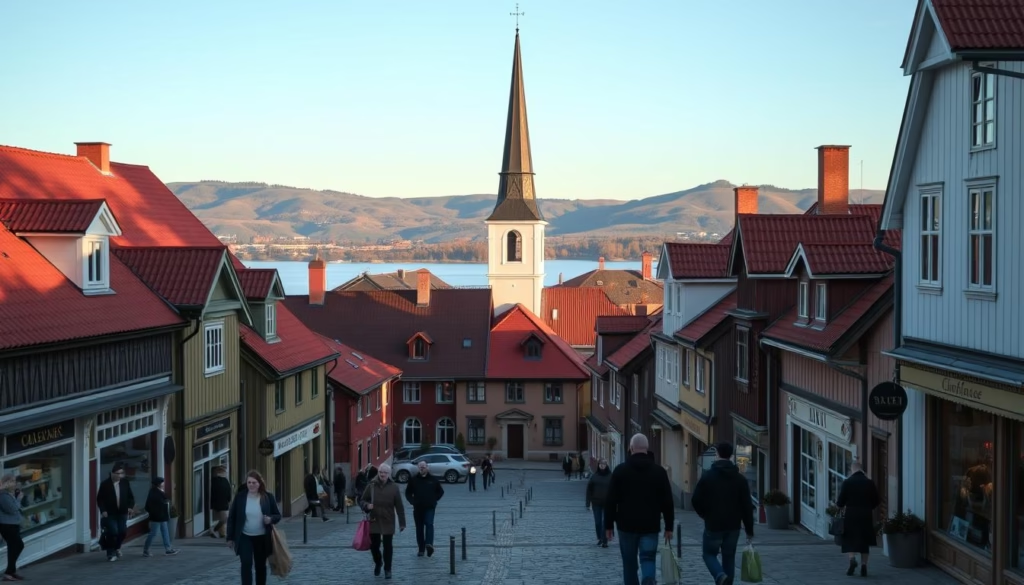
Discover Linköping, Växjö, and Other Hidden Gems
Linköping charms visitors with its aviation legacy. KLM flights land at Saab Airport – yes, that Saab – steps from the Flygvapenmuseum showcasing fighter jets. Wander Gamla-Linköping’s wooden buildings to experience 19th-century shops still making traditional candy.
Växjö lives up to its “Europe’s greenest city” title. The Linnéa Park blooms beside the cathedral where IKEA founder Ingvar Kamprad married. Rent a canoe to explore mirror-still lakes fringed with birch forests.
Museums, Castles, and Local Architecture
Up north, Östersund’s Jamtli Museum brings Viking sagas to life through costumed reenactments. Drive an hour west to Tannforsen waterfall – Sweden’s Niagara – where mist rainbows dance in midnight sun.
Luleå’s UNESCO-listed Gammelstad Church Town features 424 red cottages circling a 15th-century stone church. Winter visitors chase auroras, while summer hikers explore Swedish Lapland’s endless trails under 24-hour daylight.
For more itinerary ideas, explore this comprehensive guide to Swedish destinations. These smaller cities prove Sweden’s magic extends far beyond its postcard capitals.
Exploring the Stockholm Archipelago and Island Treasures
Just beyond Stockholm’s city lights lies a maze of 30,000 islands stretching into the Baltic Sea. This sprawling archipelago blends coastal traditions with untouched forests, where red wooden cottages dot rocky shores. Ferries glide between islets year-round, offering urban escapes that feel worlds away.
Day Trips to Vaxholm and Nearby Islands
Vaxholm anchors the archipelago’s charm, just 35 kilometers northeast of Stockholm. Known as the “Gateway to the Islands,” its candy-colored 19th-century homes cluster around a bustling harbor. Don’t miss Kastellet fortress – this star-shaped stone bastion once guarded the capital and now offers panoramic views from its weathered ramparts.
Hop between islands using the Waxholmsbolaget ferry network. Grinda’s pine forests hide swimming coves, while Sandhamn’s yacht-filled marina buzzes with summer energy. Pro tip: Pack a picnic of smoked salmon and lingonberries for spontaneous shoreline feasts.
Many isles ban cars, preserving their quiet magic. Rent a bike on Värmdö to pedal past berry patches and lakeside saunas. At dusk, watch fishing boats return to harbors where locals gather for sunset fika.
Stay overnight at Vaxholms Hotell, a waterfront gem with sea-view rooms. Summer visitors swim off granite cliffs, while winter travelers snowshoe frozen bays. Check ferry timetables early – daylight hours shift dramatically between seasons.
Best Cities to Visit in Sweden: A Comprehensive Guide
Swedish destinations blend historic buildings with modern innovation, creating itineraries that satisfy both history buffs and design enthusiasts. Whether you’re crossing the Öresund Bridge to Malmö or exploring Uppsala’s Viking roots, each location offers distinct flavors of Nordic culture.
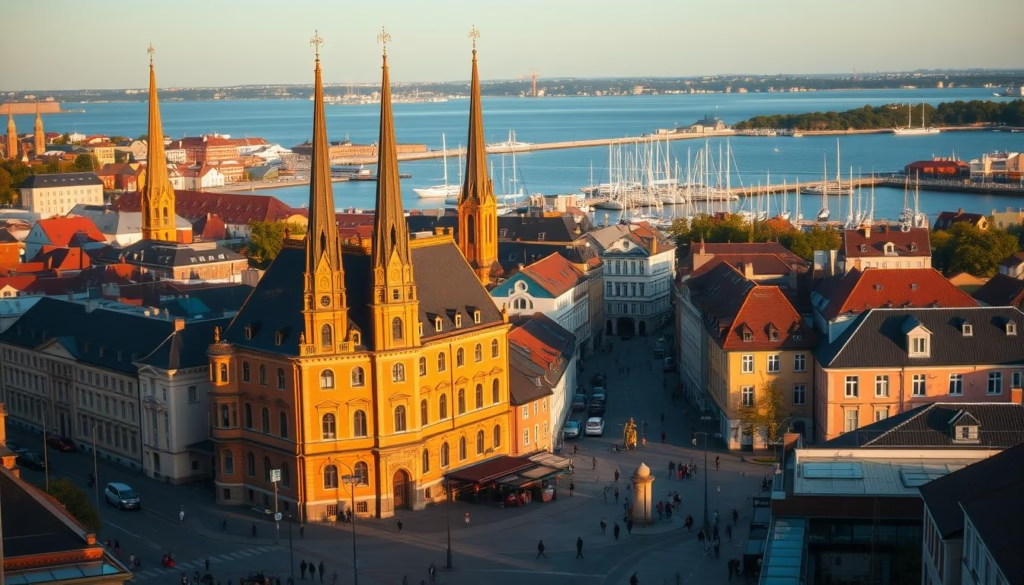
Planning Your Urban Adventure
Build your trip around Sweden’s efficient rail network. Link Malmö’s Lilla Torg square with Gothenburg’s archipelago ferries in one seamless route. Use platforms like Skyscanner for flight deals and Booking.com for waterfront stays near major attractions.
| Season | Top Activities | Travel Tip |
|---|---|---|
| Summer | Archipelago sailing, open-air museums | Book ferries early |
| Winter | Northern lights tours, Christmas markets | Pack thermal layers |
Seasonal Highlights and Outdoor Tips
June’s midnight sun illuminates Visby’s medieval walls until 11 PM – perfect for twilight photography. Winter transforms Lund’s cobblestone streets into snow-globe scenes, with cozy cafés serving glögg (mulled wine).
Combine city exploration with nature by hiking Söderåsen National Park near Helsingborg. Many urban centers offer bike rentals, letting you pedal from historic buildings to lakeside picnic spots in minutes.
Conclusion
Sweden’s urban landscapes leave lasting impressions through their thoughtful balance of innovation and tradition. Each city feels like a carefully curated place where centuries-old squares sit beside sustainable housing projects. You’ll find yourself planning return trips before you’ve even left – that’s the Nordic charm at work.
From harborfront espresso bars to forest-edged metro stations, these destinations redefine what city living can be. Efficient transit turns every day into an adventure, whether you’re hunting vintage design pieces or kayaking past waterfront apartments. Seasonal shifts keep experiences fresh – summer’s golden evenings contrast beautifully with winter’s candlelit cobblestones.
What truly sets Swedish cities apart? Their ability to make you feel both energized and relaxed. You might start your morning in a medieval place and end it watching seals play near archipelago docks. It’s this effortless blend of culture and nature that transforms casual visits into lifelong memories.
